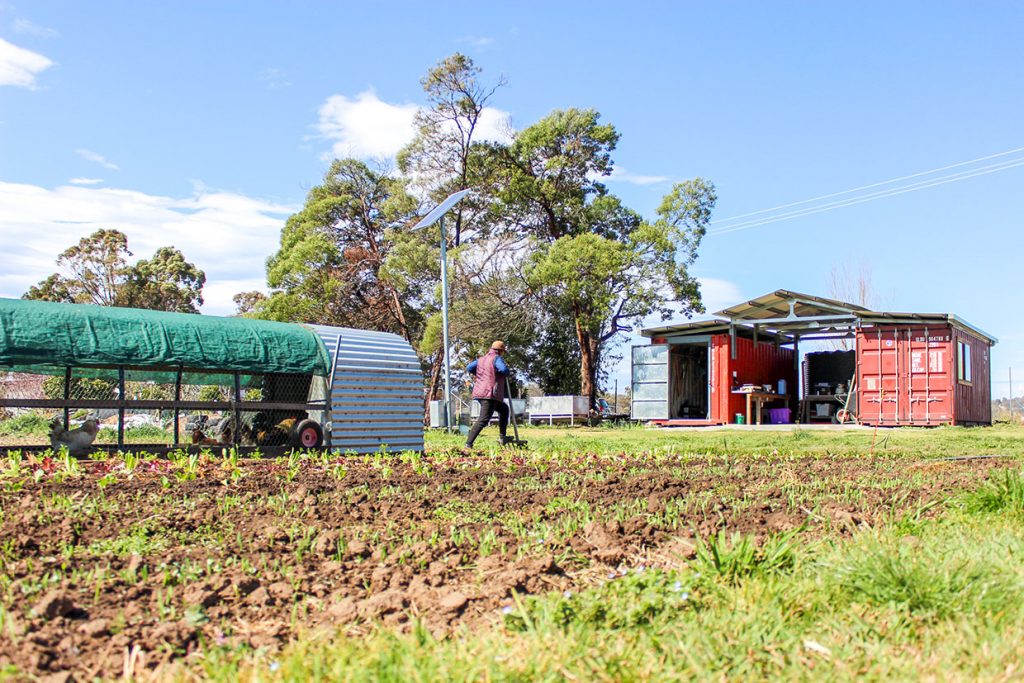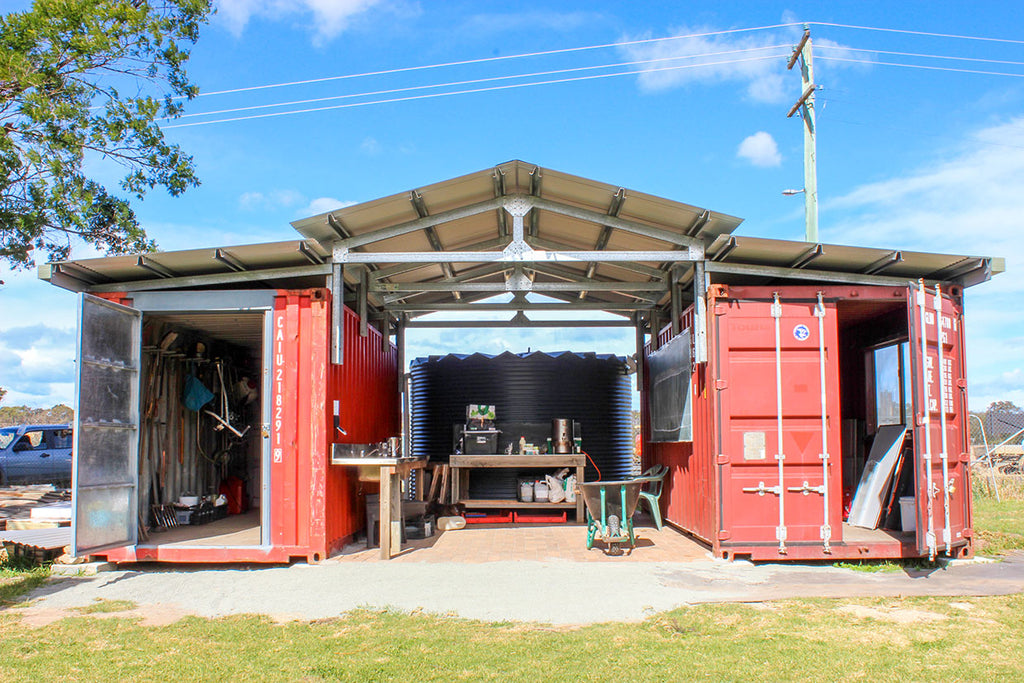Your Cart is Empty

You may have noticed some works going on at the SAGE Garden and wondered: what is going on and what is that thing?
SAGE has been run on a shoestring budget since we started in 2009. The initial infrastructure at the SAGE Garden was cobbled together mostly from found materials by generous volunteers and it has suited us well enough. However, one limitation to the site development has been the lack of an accessible toilet. The money required to build this critical piece of infrastructure has always been hard to find and hence has taken many years of figuring out how to afford the materials and find the volunteers with enough time to take on the task. The garden has also needed other works to the site, such as more paving, to improve the safety and accessibility for our workshops and events.
Another limitation to the site has been the shed area and although it has been adequate and the best value for dollars spent (very, very little) it was in need of an upgrade. Add to this another SAGE initiative — the inCUBEator prototype — and we managed to bundle a big list of works projects into an attractive grant proposal which was successful in securing a contribution from the Building Better Regions Fund, which SAGE has to match dollar for dollar.
A couple of years ago under Catherine Potter’s presidency, we came up with a 4-point plan to develop more market gardeners in our region. A local food system needs local growers and while we have a good market at 3pm every Tuesday at Riverside Park, there is still a lot of demand that can’t be filled by our existing base of growers. While the SAGE intern program has had some success, we figured we need to ramp it up and also provide larger scale experience and opportunities for graduate growers to remain in the area.
To achieve this will be quite complex, but to keep it simple for this article, we’ll focus on one part. The 4-point plan has the SAGE Garden continuing as it does with the SAGE intern program becoming an entry level learning experience. The next step is to develop a SAGE Student Farm which is to be a significantly sized vegetable production enterprise to develop grower skills and have the graduates ready for their own business — or at the very least become sought after skilled farm workers. This project is currently under development. NOTE: We are looking for land.
The next stage is the SAGE 100 Acre Farm. The 100 Acre Farm is to be run much along the lines of the Student Farm concept but incorporates sustainable grazing management for livestock and engages with partner farmers in the fields of dairy, aquaculture and abattoir services among others. This idea has yet to be developed.
Which leads me to step 4 and why we’re here. The SAGE Farm inCUBEator. Graduates from the SAGE intern program, the Student Farm and those from outside the program that may have some experience but are not quite farm-ready may still need various agricultural, technical, practical, financial, logistical and personal support to transition from being trainees to establishing their own viable commercial market garden businesses. The next step in our “growing the growers” vision is a farm “incubator”. A business start-up initiative to support new farmers in making this transition. The price of land locally has already gone beyond most farmer’s capacity to develop a farm business and maintain the kind of mortgage repayments that are required without external income. If you can’t make a viable business from farming then the only value a farm has is the personal security of a home or the development potential. Unless we want to see productive landscapes on our rural lands being run by managers that understand ecology then we can only expect to see more Braemar-style developments.
Combining those trains of thought, it seems likely that farm owners need to work off-farm, leaving the farm unproductive and unmanaged with even fewer agricultural jobs, meaning potential farmers don’t get a run. Unless!! We believe we can combine the two by encouraging portable farms to thrive, allowing new emerging growers to lease a patch to work for a few years and gain the necessary experience, skill and markets to fully consider the numbers on their own future mortgage. Farm incubators assist new farmers with access to land, resources and expertise to assist them to start up their own independent farm enterprises. Assistance may include equipment, tools, machinery, infrastructure; services like irrigation, water and electricity; technical assistance; connection to experts and mentor farmers; and help to find low-cost or free land to lease or purchase.
The SAGE Farm InCUBEator will be two transportable shipping containers, one of which is simple accommodation, the other a “farm shed” that contains all the gear to establish a temporary market garden on leased land. The farm shed will contain a small tractor with cultivation implements, hand tools, irrigation line, a small wash and packing station, the power unit for both containers, safe seed storage, trellis material, tarps and row covers, and a tight plan for the first year’s production.

What you now see at the SAGE Garden is the first inCUBEator prototype and “showroom”. It gives us a place to figure out how the CUBE should work and function, what we need to put in it, how it all goes together and gets packed away and moved if necessary. Something like what you see at the garden will be what turns up at an existing unmanaged, unproductive paddock and gets improved into a new farmer’s livelihood.
We aim to have a number of Farm InCUBEator units supporting a number of new farmers at any one time. SAGE will help broker between InCUBEator farmers and land holders; the farmer will pay rent to the land holder from the proceeds of their leased plot. The land holder gets the added benefit of having someone on farm at all times improving their soil.
It’s a long term vision for keeping agricultural land productive. There’s so much more to do. The SAGE Farm InCUBEator is just one small piece in the very complex local food security puzzle we need solve.
July in the garden is time for observation, organising and planning for the season ahead.
The SAGE committee and its various sub committees and working groups have been actively growing SAGE for 16 years. Many SAGE members have stepped up and contributed over the years and with the AGM due on 20 September, you might like to consider if it’s time for you to ‘take a turn’. Read on to find out more about volunteering on a SAGE committee.
Nicole Mensinga, SAGE member and Acupuncturist at Healing Hands Moruya offers some warming tips to support your body, mind, and garden this winter season.


